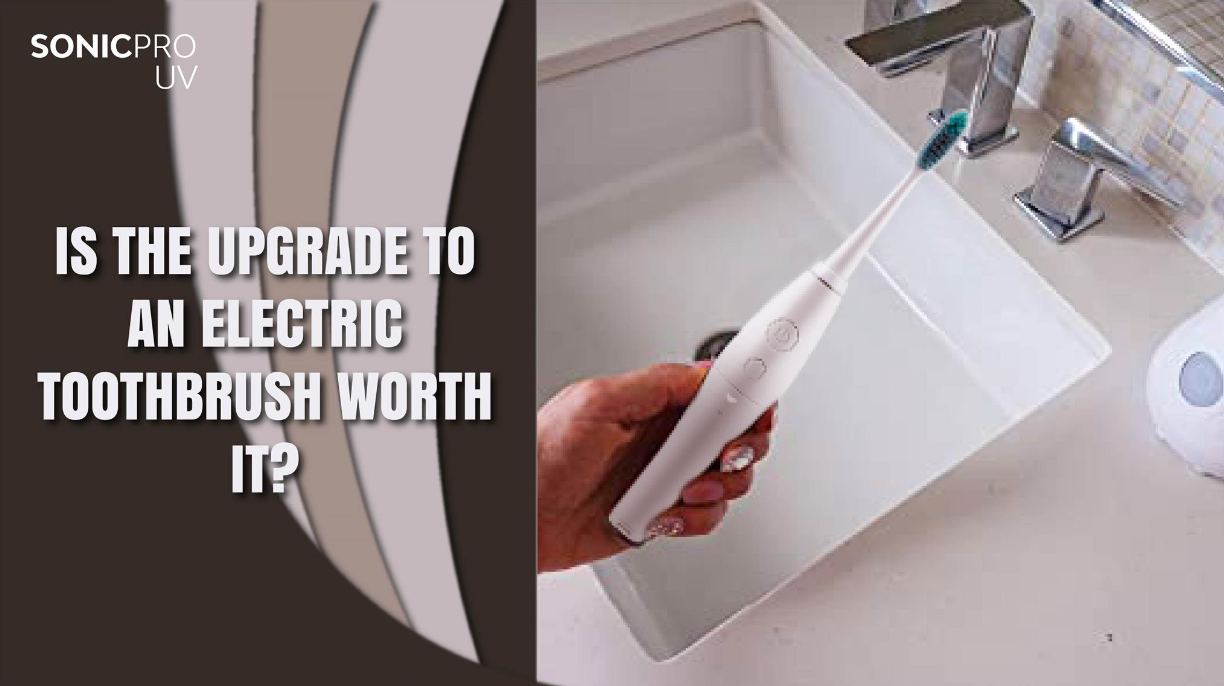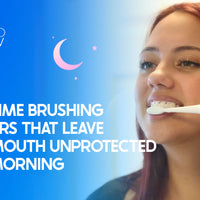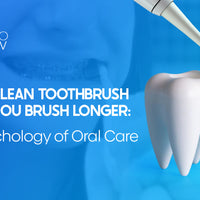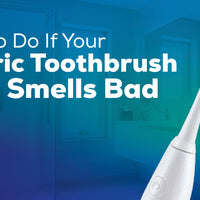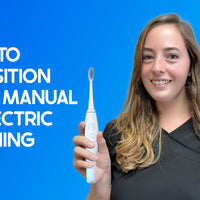In today's fast-paced world, oral hygiene remains a critical aspect of our overall health. With advancements in technology, electric toothbrushes have gained popularity as a superior alternative to traditional manual brushes. But is upgrading to an electric toothbrush really worth it? In this article, we will explore the benefits, potential drawbacks, and how to determine if making the switch is the right decision for you.
1. 🧪 The Science Behind Electric Toothbrushes
1.1 How Do Electric Toothbrushes Work?
Electric toothbrushes utilize motorized brush heads that provide a consistent and vigorous cleaning action. These devices typically come equipped with oscillating, rotating, or sonic technology that allows the bristles to move rapidly, enhancing their cleaning capability. Unlike manual brushing, where the user must apply pressure and maintain a specific motion, electric toothbrushes automate the process. Most models offer multiple brushing modes tailored for different needs, such as sensitive gums, gum massage, or even whitening. Additionally, many electric toothbrushes feature built-in timers that ensure users brush for the recommended two minutes, promoting healthier habits.
Electric toothbrushes can also incorporate smart technology that connects to mobile apps via Bluetooth. These apps can provide real-time feedback on brushing habits, suggest areas that need more attention, and even offer educational tips to improve your overall oral hygiene. This integration of technology into dental care makes electric toothbrushes not just a cleaning tool but an interactive health device.
1.2 Clinical Studies on Effectiveness
Numerous studies have demonstrated that electric toothbrushes can be more effective in reducing plaque and gingivitis compared to manual brushing. Research published in the Journal of Clinical Dentistry found that electric toothbrushes reduce plaque by an impressive 21% and gingivitis by 11% over a three-month period compared to manual brushes. The consistent and effective brushing motion provided by electric toothbrushes helps ensure that hard-to-reach areas are cleaned thoroughly, which is especially beneficial for those with braces, implants, or dental work.
In addition to plaque removal, a systematic review published in the Cochrane Database of Systematic Reviews concluded that electric toothbrushes, particularly those with oscillating-rotating technology, lead to significant improvements in gum health. The study noted that regular use could reduce the risk of developing periodontal disease, which affects millions of adults worldwide. This compelling evidence positions electric toothbrushes as a worthwhile investment for individuals looking to improve their oral health outcomes.
2. 🌟 Advantages of Upgrading to an Electric Toothbrush
2.1 Improved Cleaning Efficiency
One of the most significant advantages of electric toothbrushes is their ability to provide a more thorough clean. The speed and motion of the brush heads allow for better plaque removal and gum care. In fact, studies have shown that electric toothbrushes can remove up to 100% more plaque than manual brushes over time. Many electric toothbrushes come with built-in timers to encourage brushing for the recommended two minutes, which can help improve overall oral hygiene habits.
Moreover, some models offer pressure sensors that alert users if they are brushing too hard, helping to protect sensitive gums and enamel. This feature is especially beneficial for individuals who may not be aware of their brushing technique and often apply excessive force.
2.2 Built-In Features for Enhanced Oral Care
Electric toothbrushes often include advanced features designed to enhance the brushing experience. Many models come equipped with pressure sensors to prevent excessive force, ensuring that you don't harm your gums while brushing. Additionally, smart toothbrushes can connect to mobile apps to track your brushing habits, offer personalized feedback, and even suggest areas that need more attention.
Some electric toothbrushes also come with multiple brushing modes, allowing you to customize your cleaning experience based on your oral health needs. For instance, sensitive mode may provide a gentler brushing action for individuals with receding gums, while deep clean mode may offer a more vigorous cleaning session for those who require additional plaque removal. These features can help users maintain better oral hygiene over time.
2.3 User-Friendly for All Ages
Electric toothbrushes can be especially beneficial for children, seniors, and individuals with limited mobility. The ease of use and the fun designs of many electric toothbrushes can encourage kids to brush more regularly. Many models feature vibrant colors, cartoon characters, or even musical timers that make brushing a more enjoyable experience for children.
For seniors or those with dexterity issues, electric toothbrushes can help ensure that they maintain proper oral hygiene without the physical strain of manual brushing. The automatic movements eliminate the need for precise hand coordination, making it easier for those who struggle with grip or fine motor skills to keep their teeth clean. Additionally, some electric toothbrushes are designed with ergonomic handles that provide a comfortable grip for all users.
3. ⚖️ Potential Drawbacks of Electric Toothbrushes

3.1 Cost Considerations
One of the most significant drawbacks of electric toothbrushes is the initial investment. While a good manual toothbrush can cost as little as a few dollars, electric toothbrushes range from $20 to over $200, depending on the brand and features. The price difference can be a barrier for some consumers, especially if they are unsure about the effectiveness of electric toothbrushes.
Additionally, replacement brush heads can add to the long-term costs, often running between $5 to $15 each, depending on the brand and model. It’s important to factor in these ongoing expenses when considering whether to invest in an electric toothbrush. However, many users find that the benefits in terms of improved oral health outweigh the financial investment.
3.2 Learning Curve and Maintenance
Transitioning to an electric toothbrush may require an adjustment period. Some users might find the vibrations or motions unusual at first, and they may need time to adapt to the new brushing technique. It's crucial to follow the manufacturer's guidelines for usage to maximize effectiveness.
Additionally, it’s essential to properly maintain the toothbrush to ensure its longevity. This includes regularly charging the device, replacing brush heads every three to six months, and cleaning the device itself to prevent bacteria buildup. Users must also be diligent about checking battery life, as running out of charge can disrupt your oral care routine.
3.3 Portability Issues
If you travel frequently, an electric toothbrush may not always be the most convenient option. While many models come with travel cases, the need for charging can be a hassle when on the go. Manual toothbrushes, on the other hand, are lightweight and easy to pack without the need for batteries or chargers.
However, many brands are now producing compact travel-friendly electric toothbrushes that offer portability without sacrificing power. These models often come with built-in rechargeable batteries, making them a viable option for travelers. If you frequently travel for business or pleasure, consider your lifestyle when deciding on the type of toothbrush to invest in.
4. 🎯 Making the Decision: Is an Electric Toothbrush Right for You?
4.1 Assess Your Oral Health Needs
To determine if upgrading to an electric toothbrush is worth it, consider your individual oral health needs. If you struggle with plaque buildup, gum issues, or have specific dental conditions, an electric toothbrush could provide significant benefits. Consulting with your dentist can help you decide the best option for your oral health. They can evaluate your brushing habits and recommend the most suitable toothbrush based on your dental history and lifestyle.
Additionally, if you have children, investing in an electric toothbrush designed specifically for kids can be beneficial for developing healthy brushing habits early on. Engaging them with fun designs and features may lead to a more positive attitude towards oral hygiene.
4.2 Budget and Lifestyle Factors
Evaluate your budget and how much you're willing to spend on dental hygiene. If you have the financial means, investing in an electric toothbrush can be a worthwhile addition to your routine. Additionally, consider your lifestyle; if you travel frequently or prefer low-maintenance options, a manual brush might still be a better fit.
Remember that some health insurance plans may cover a portion of the costs associated with electric toothbrushes, so check with your provider. Many retailers also offer discounts and bundles, allowing you to save on replacement brush heads when you purchase an electric toothbrush. Look for reputable brands that offer quality products without breaking the bank.
Conclusion
Upgrading to an electric toothbrush can significantly enhance your oral hygiene routine, offering improved cleaning efficiency, user-friendly features, and convenience for various age groups. However, it's essential to weigh the costs, maintenance requirements, and personal preferences before making a switch.
If you decide to take the plunge into the world of electric toothbrushes, consider exploring options available at Buy Sonic Pro. They offer a range of high-quality electric toothbrushes designed to meet various needs and preferences. Ultimately, whether you choose an electric toothbrush or stick with a manual version, the most important thing is to maintain a consistent brushing routine for optimal oral health.
Read More Articles:
- 10 Benefits of Using an Electric Ultraviolet Toothbrush
- 5 Reasons Why SonicPro UV is the #1 Electric Toothbrush for Kids
- 5 Surprising Health Benefits of the SonicPro UV Toothbrush
- Manual vs. electric toothbrush: which is better?
- How to Save Money at the Dentist with an Ultraviolet Toothbrush?
- Top Tips for Cleaning Your Electric Toothbrush for Cavity Prevention

